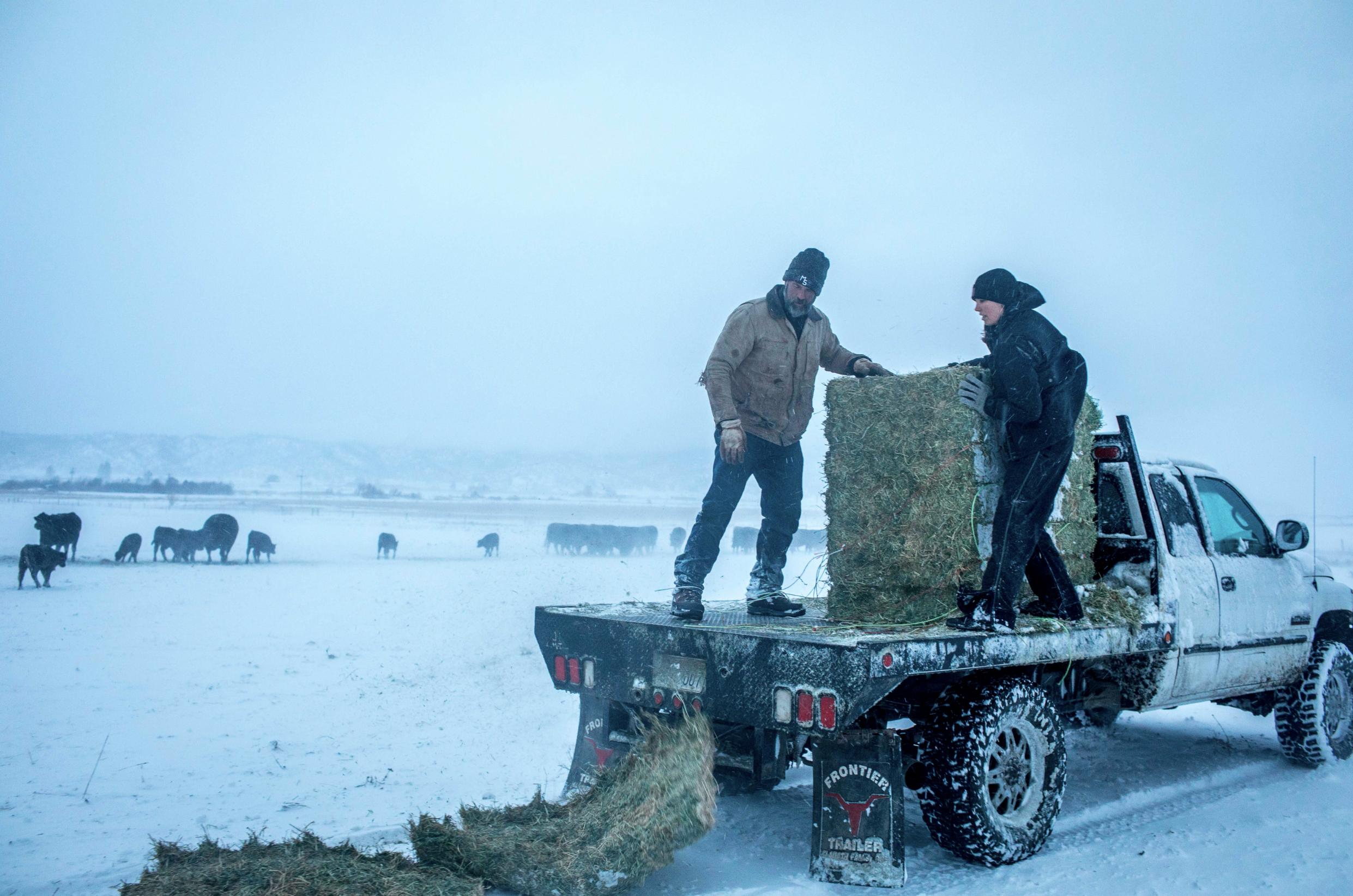The M5 Feed Truck
In the winter, we feed our livestock twice a day from the feed truck until our pastures start growing and have time to develop a healthy base so the animals can graze. Then we move to daily irrigation and more pasture management during the growing season.
We work with a cattle nutritionist and feed high quality alfalfa to our momma cows and calves in the winter. They are big bales with big flakes and we throw them off the back of the truck on dry ground to form a feed line. The animals know to expect us twice a day and fall in line as we idle the truck along :)
We used to feed smaller bales that Brian would handload everyday. We calculated that he loaded and fed about 1.5 million pounds of alfalfa each winter, bale by bale and flake by flake. Now we load the big bales with a tractor since each weighs about 1,500 pounds! We still feed one flake at a time off the back of the trusty feed truck.
After we feed, we take some time to walk or drive the feed line to check that every animal is eating and looking healthy. Not coming to feed is usually a sure sign something is wrong, so feeding twice a day (as opposed to one bigger feeding) not only keeps their metabolism up to keep them warm through the night and to get the best nutrition they can, but it also allows us to catch something that might be wrong as early as possible so we can treat or manage it.
We got our feed truck when we moved to the ranch from an accountant and it was in pristine condition. We put a flat bed on the back to feed from and have really only used it around the ranch. Most of the miles have been run in "4L" or low gear where it idles slowly along so the girls or I can steer as Brian feeds. Or it drives itself out in the pasture while he jumps on back and throws hay himself.
It's been bumped, bruised, and beat up. I think the term that fits this old beast is 'rode hard and put away wet,' but it's still trucking along and we love it!





